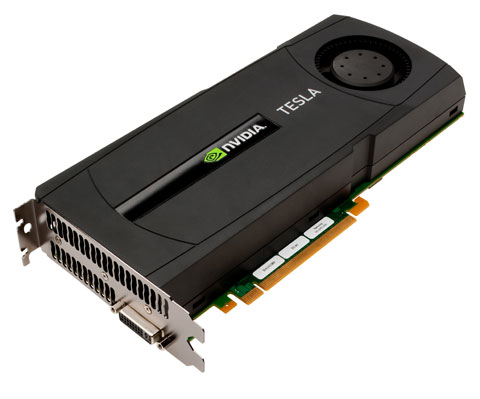
Nvidia’s Tesla C2070 sits inside a workstation or server and features 448 CUDA cores and 6GB memory dedicated for GPU compute
Two of the largest automakers in Europe are evaluating Nvidia’s GPU compute technology for analysing the structural behaviour of large engine models.
Testing in Abaqus 6.11, the latest release the Finite Element Analysis (FEA) product suite from Dassault’s Simulia, Nvidia’s Quadro and Tesla Graphics Processing Units (GPUs), coupled with Intel Xeon CPUs, were said to run Computer-Aided Engineering (CAE) simulations twice as fast as with CPUs alone.
While the identity of the automakers remains confidential, Nvidia did share the specifications of the test machines with DEVELOP3D. Automaker 1 used an HP Z800 Workstation with two Xeon X5550 (Nehalem) 2.67GHz CPUs, 48GB memory, an Nvidia Tesla C2070 GPU and CUDA 3.2, while automaker 2 used a Supermicro Xerver with two Xeon X5650 2.8GHz (Westmere) CPUs, 48GB memory, an Nvidia Tesla M2070 and CUDA 3.2.
While these tests were performed using Nvidia’s proprietary parallel computing architecture, CUDA, Simulia will also support OpenCL in the next release of Abaqus. OpenCL can use CPUs and GPUs including AMD FirePro / FireStream and Nvidia Quadro / Tesla cards.
According to AMD, OpenCL support is currently an undocumented, but fully functional feature in Abaqus 6.11.
We expect to hear more news on the use of GPUs for simulation and rendering later this year.






